Choosing the Right Data Governance Model: Centralized, Federated, or Hybrid?
Data governance is no longer optional. As data becomes the backbone of digital transformation, the way you manage it determines not only compliance and efficiency but also your ability to innovate and stay competitive.
One of the most important and often overlooked decisions in your data governance journey is choosing the right operating model.
There are three common paths: the Centralized Data Governance Model, the Federated Data Governance Model, and the Hybrid Data Governance Model. Each offers distinct benefits and tradeoffs depending on your organization’s size, structure, goals, and risk tolerance.
This guide explores the core differences between these models, including practical insights, common pitfalls, and recommendations for making the right choice.
What Is a Data Governance Operating Model?
Before diving into the options, it’s helpful to define what a data governance operating model is.
In simple terms, it’s the structure that defines who owns, manages, and controls data across your organization. It includes the roles, responsibilities, policies, and workflows that turn data from a chaotic asset into a strategic one.
The ideal model for your organization depends on several variables, including:
-
The maturity of your data strategy
-
Number of business units
-
Regulatory environment
-
Volume and complexity of your data
-
Internal capabilities and resources
The Federated Data Governance Model
Overview
The federated model decentralizes decision-making. Each business unit or department owns and governs its data while adhering to organization-wide policies and frameworks.
Key Features
-
Local ownership: Departments manage their data assets.
-
Central standards: A data governance council sets high-level principles.
-
Agility: Teams respond quickly to their unique needs.
Advantages
-
More responsive to departmental requirements
-
Better engagement across stakeholders
-
Fosters a culture of data ownership
Challenges
-
Harder to enforce consistency
-
Risk of duplicated efforts
-
Requires mature communication channels
When to Choose It
Opt for a federated model if you operate in a decentralized business (e.g., multinational or diversified holding), or if local agility is crucial.
Example: A global consumer goods company with autonomous regional teams might adopt federated governance to meet country-specific compliance requirements.
The Centralized Data Governance Model
Overview
In this model, data governance is managed by a central team or function. All decisions, tools, and policies come from a single governing body.
Key Features
-
Single point of control: One team defines and enforces data rules.
-
Clear authority: Roles and escalation paths are defined.
-
Standardized tools: Shared technologies and processes.
Advantages
-
High level of consistency across the business
-
Easier compliance and auditability
-
Efficient tool and process standardization
Challenges
-
May lack local context
-
Slower response to specific team needs
-
Central team can become a bottleneck
When to Choose It
Centralized governance is most effective in regulated industries or organizations at an early stage of their data maturity.
Example: A national bank operating under strict financial regulations might centralize data governance to streamline risk management.
The Hybrid Data Governance Model
Overview
The hybrid model blends centralized oversight with localized execution. It aims to deliver the best of both worlds: consistency and agility.
Key Features
-
Shared responsibility: Central body sets policies, departments apply them.
-
Collaboration tools: Shared data catalogs and stewardship platforms.
-
Balance of speed and control
Advantages
-
Flexible but still accountable
-
Easier to scale as the organization grows
-
Encourages innovation with guardrails
Challenges
-
Requires governance maturity
-
More complex coordination
-
Needs investment in cross-functional tools and processes
When to Choose It
Best for mid-to-large organizations with a moderate to high level of data maturity.
Example: A large retailer might use a hybrid model to centralize customer data policies while letting product teams manage pricing or inventory data locally.
How to Choose the Right Model for You
Choosing a model is not just a technical decision. It’s a strategic one that should align with your business vision.
Here are some practical steps:
-
Assess your current maturity:
-
Do you have centralized data capabilities?
-
Are departments aligned or operating independently?
-
-
Consider your regulatory needs:
-
Centralized works better for highly regulated industries.
-
Federated may be needed if compliance varies across geographies.
-
-
Evaluate your company culture:
-
Do teams value autonomy?
-
Is there a history of strong central leadership?
-
-
Map your data dependencies:
-
Are data sources tightly connected across departments?
-
Or does each team own distinct datasets?
-
-
Start small:
-
You don’t need to overhaul your governance model overnight.
-
Consider piloting a hybrid structure with a few departments.
-
Frequently Asked Questions (FAQs)
1. What is the biggest risk of a federated model?
Lack of coordination. Without strong communication, data definitions and policies can diverge, resulting in inconsistencies.
2. Can we change our data governance model later?
Yes. Many companies start centralized and transition to hybrid or federated models as their maturity increases.
3. How do we enforce policies in a federated or hybrid model?
Establish a central council, utilize shared tools such as data catalogs, and appoint data stewards within each business unit.
4. Is a hybrid model more expensive?
Not necessarily. While initial setup is more complex, it often leads to better ROI through flexibility and faster innovation.
5. What kind of companies benefit most from centralized governance?
Organizations in finance, healthcare, or government, where compliance and consistency are paramount.
Conclusion
The right data governance operating model can become a competitive advantage, not just a compliance checkbox. If you’re early in your data strategy, a centralized model can build the foundation. If you’re scaling fast or dealing with diverse teams and markets, a hybrid or federated model may unlock greater agility.
Whatever path you choose, ensure your model supports trust, visibility, and actionability. Good governance isn’t just about control; it’s about enabling people and systems to make better, faster decisions with confidence.
Choosing the right model is just the beginning.
Defining a governance model is important. Operationalizing it across complex systems like Oracle Cloud, Databricks, Snowflake, etc., is what sets data leaders apart.
With Arkon Data Platform, you can:
-
Extend governance to Oracle Cloud ERP, HCM, and SCM without relying on brittle ETL or losing semantic structure.
-
Bring Oracle data into tools like Unity Catalog to apply governance, auditing, lineage, and schema enforcement from a single control plane.
-
Unify governance across structured and unstructured sources: Oracle, Snowflake, Databricks, Azure, and more.
-
Enable domain-level accountability while maintaining global data standards. Support centralized, federated, or hybrid models with confidence.
-
Accelerate compliance and AI adoption by making high-value enterprise data fully governed, discoverable, and ready for downstream use.
If your governance strategy doesn’t include Oracle, it’s incomplete.If it includes Oracle but excludes Unity Catalog, it’s inefficient.If it requires heavy manual work, it’s unsustainable.
Arkon Data Platform closes that gap.
👉 Learn how to operationalize your data governance model without compromising control or flexibility.


